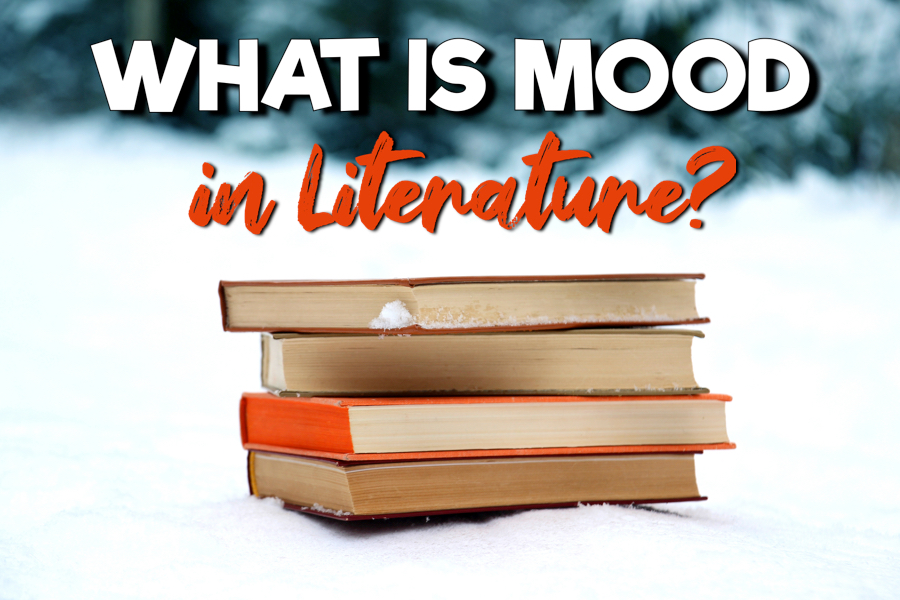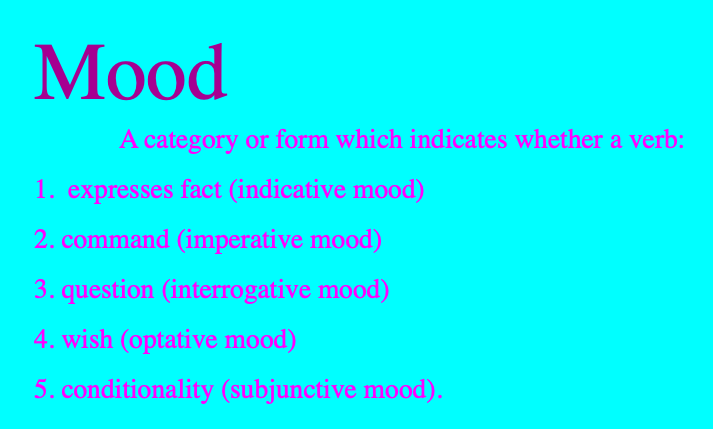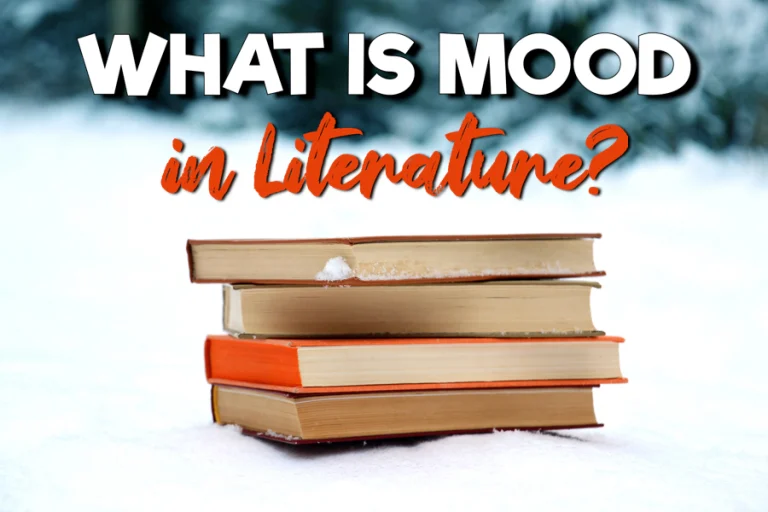Mood literary definition confuses many students and writers who want to understand this powerful storytelling tool. You’ve probably felt scared while reading a horror story or happy during a romantic scene.
That emotional feeling you experience comes from the author’s skillful use of mood.
This comprehensive guide will show you exactly what mood means in literature and how to spot it in any text.

What Is Mood in Literature?
Mood literary definition refers to the emotional atmosphere that an author creates for readers through their writing.
Think of mood as the invisible force that makes you feel certain emotions while reading.
When you read a story and feel tense, sad, joyful, or mysterious, that’s the mood working its magic.
Authors use specific words, descriptions, and situations to create these feelings.
The mood isn’t what the characters feel – that’s called tone.
Mood focuses on what YOU feel as a reader.
Literary scholars define mood as the emotional response triggered by the author’s deliberate choices in language and setting.
How Mood Differs from Tone and Atmosphere
Many people mix up mood, tone, and atmosphere, but they’re different literary elements.
Mood = How the reader feels
Tone = The author’s attitude toward the subject
Atmosphere = The overall feeling of a place or situation
Here’s a simple example:
In a horror story, the tone might be serious and dark (author’s attitude).
The atmosphere could be a creepy old house with creaking floors.
The mood you feel as a reader might be fear or suspense.
Understanding these differences helps you analyze literature more effectively.
Types of Mood in Literature
Happy and Joyful Moods
Cheerful moods make readers feel good and optimistic.
Authors create happy moods through:
- Bright, colorful descriptions
- Positive character interactions
- Successful outcomes
- Celebration scenes
- Warm, comfortable settings
Dark and Mysterious Moods
These moods create tension and keep readers on edge.
Common elements include:
- Shadows and dim lighting
- Unknown threats
- Unexplained events
- Isolated locations
- Strange sounds or occurrences
Romantic and Tender Moods
Love stories use specific techniques to create warm feelings.
Romantic mood builders:
- Soft, gentle descriptions
- Intimate conversations
- Beautiful natural settings
- Sweet gestures between characters
- Peaceful, private moments
Sad and Melancholic Moods
These moods evoke sympathy and deep emotions.
Techniques include:
- Loss and separation
- Rainy or gray weather
- Memories of better times
- Characters facing hardships
- Quiet, reflective moments
How Authors Create Mood
Word Choice and Diction
Authors pick specific words to trigger emotional responses.
Strong words create stronger moods than weak ones.
Compare these sentences:
- “The house was old” (neutral)
- “The house was ancient and crumbling” (mysterious/dark)
Every word choice affects the mood you feel.
Setting and Environment
The place where a story happens strongly influences mood.
A sunny beach creates different feelings than a dark forest.
Weather conditions also play a huge role:
- Storms = tension, conflict
- Sunshine = happiness, hope
- Fog = mystery, confusion
- Snow = isolation, purity
Character Actions and Dialogue
- What characters do and say shapes the emotional atmosphere.
- Angry shouting creates a tense mood.
- Gentle whispers create an intimate mood.
- Character behavior guides your emotional response.
Imagery and Sensory Details
- Authors use the five senses to create vivid moods.
- Visual images (what you see) are most common.
- But sounds, smells, textures, and tastes also create powerful moods.
- Rich sensory details make you feel like you’re actually there.

How to Identify Mood in Literature
Step 1: Pay Attention to Your Feelings
The first step is noticing how the text makes you feel.
Ask yourself:
- What emotions am I experiencing?
- Why do I feel this way?
- What specific parts triggered these feelings?
Your emotional response is the key to identifying mood.
Step 2: Look for Mood-Creating Elements
Search for specific techniques authors use:
Descriptive Language
- Adjectives that create emotional responses
- Vivid imagery
- Metaphors and similes
- Sensory details
Setting Details
- Time of day
- Weather conditions
- Location characteristics
- Objects in the environment
Character Elements
- Dialogue tone
- Body language
- Actions and reactions
- Relationships between characters
Step 3: Consider the Overall Atmosphere
Look at how all elements work together.
Individual parts might seem neutral, but combined they create powerful moods.
The whole story atmosphere is greater than its individual parts.
Step 4: Track Mood Changes
Mood often shifts throughout a story.
Notice when and why these changes happen.
Mood changes usually occur during:
- Plot turning points
- Character revelations
- Setting changes
- Conflict resolution
Examples of Mood in Famous Literature
Example 1: Edgar Allan Poe’s “The Raven”
Poe creates a dark, melancholic mood through:
- Late night setting
- Lonely narrator
- Mysterious visitor
- Repetitive, haunting refrain
- Gothic atmosphere
The mood makes readers feel the narrator’s despair and isolation.
Example 2: Jane Austen’s “Pride and Prejudice”
Austen creates various moods:
- Light, humorous mood during social gatherings
- Romantic mood during tender moments
- Tense mood during conflicts
- Joyful mood at the resolution
The changing moods keep readers engaged throughout the story.
Example 3: William Shakespeare’s “Macbeth”
Shakespeare builds a dark, foreboding mood:
- Supernatural elements (witches)
- Guilt and paranoia
- Blood imagery
- Stormy weather
- Isolation and betrayal
This mood reinforces the play’s themes of ambition and corruption.
Mood vs. Theme: Understanding the Connection
Mood and theme work together but serve different purposes.
Theme = The central message or lesson
Mood = The emotional vehicle that delivers the theme
For example, in a story about friendship:
- Theme: True friends support each other
- Mood: Warm, comfortable, loyal
The mood helps readers emotionally connect with the theme.
Common Mood Words and Phrases
Positive Moods
- Cheerful, optimistic, hopeful
- Peaceful, serene, calm
- Romantic, tender, loving
- Exciting, adventurous, thrilling
- Triumphant, victorious, successful
Negative Moods
- Sad, melancholic, sorrowful
- Angry, hostile, bitter
- Fearful, terrifying, ominous
- Lonely, isolated, abandoned
- Frustrated, annoyed, irritated
Neutral Moods
- Mysterious, suspenseful, uncertain
- Nostalgic, reflective, contemplative
- Serious, formal, dignified
- Humorous, playful, lighthearted
- Realistic, matter-of-fact, straightforward
The Importance of Mood in Different Genres
Horror and Thriller
Mood is crucial for creating fear and suspense.
Without the right mood, scary stories lose their power.
Authors use darkness, isolation, and unknown threats.
Romance
Romantic mood creates emotional connection between readers and characters.
Tender moments and beautiful settings enhance the love story.
Mystery
Mysterious mood keeps readers guessing and engaged.
Clues and red herrings maintain the puzzling atmosphere.
Fantasy and Science Fiction
These genres use mood to make impossible worlds feel real.
Wonder, magic, and otherworldly atmospheres transport readers.
Analyzing Mood: Questions to Ask
When analyzing mood in literature, consider these questions:
About Your Response:
- How does this text make me feel?
- What emotions am I experiencing?
- Why do I feel this way?
About the Text:
- What words create specific feelings?
- How does the setting affect the mood?
- What do the characters’ actions contribute?
- How do dialogue and descriptions work together?
About Changes:
- Does the mood shift during the story?
- What causes these mood changes?
- How do mood changes affect the plot?
Teaching Mood to Students
Simple Strategies
Use Familiar Examples Start with movies, songs, or TV shows students know.
These examples make mood concepts easier to understand.
Create Mood Boards Visual representations help students see mood elements.
Collect images, colors, and words that represent different moods.
Practice with Short Passages Use brief excerpts to practice mood identification.
Short texts are less overwhelming for beginners.
Assessment Ideas
Mood Journals Have students track their emotional responses while reading.
This builds awareness of mood’s effects.
Comparison Activities Compare how different authors create similar moods.
This shows various techniques for mood creation.
Creative Writing Exercises Let students practice creating specific moods in their own writing.
This deepens their understanding through hands-on experience.
Common Mistakes When Identifying Mood
Confusing Mood with Plot Events
- Plot events are what happens in the story.
- Mood is how these events make you feel.
- A character’s death (plot event) might create a sad mood, but they’re different elements.
Mixing Up Character Emotions and Reader Emotions
- Character emotions are what fictional people feel.
- Mood is what you as a reader feel.
- A character might be happy while the overall mood is ominous.
Ignoring Subtle Mood Changes
- Mood doesn’t always announce itself dramatically.
- Sometimes mood shifts are quiet and gradual.
- Pay attention to small changes in language and setting.
Focusing Only on Obviously Emotional Scenes
- Mood exists throughout entire works, not just in dramatic moments.
- Even calm, peaceful scenes have mood.
- Every part of a story contributes to the overall emotional atmosphere.
Practical Exercises for Mood Recognition
Exercise 1: Mood Mapping
- Read a short story and create a mood map.
- Track how mood changes from beginning to end.
- Note specific techniques that create each mood.
Exercise 2: Rewriting Scenes
- Take a neutral scene and rewrite it with different moods.
- This shows how word choice and details affect emotional response.
Exercise 3: Mood Comparison
- Compare how different authors handle similar situations.
- Notice different approaches to creating the same mood.
Exercise 4: Sensory Analysis
- Identify which senses authors use to create specific moods.
- Notice patterns in how different senses contribute to emotions.
Advanced Mood Analysis Techniques
Tracking Mood Patterns
- Look for repeating mood patterns throughout a work.
- Many authors use cyclical mood structures.
- These patterns often reflect theme and character development.
Cultural Mood Influences
- Consider how cultural background affects mood interpretation.
- Different cultures may respond differently to certain mood elements.
- Understanding cultural context deepens mood analysis.
Historical Mood Evolution
- Notice how mood creation has changed over time.
- Modern authors use different techniques than classical writers.
- Comparing different eras reveals evolving approaches to mood.

Mood in Different Literary Forms
Poetry
- Poetry uses condensed language to create intense moods.
- Every word carries emotional weight.
- Rhythm and sound patterns also contribute to mood.
Drama
- Stage plays use visual and auditory elements beyond words.
- Lighting, music, and set design create mood.
- Actor performance adds another layer of mood creation.
Novels
- Longer works allow for complex mood development.
- Authors can build mood gradually over many chapters.
- Multiple plot lines can create contrasting moods.
Short Stories
- Brief works must create mood quickly and efficiently.
- Every element must contribute to the overall emotional effect.
- Concise language carries more emotional weight.
FAQs
What is the literary definition of mood?
In literature, mood refers to the emotional atmosphere that a writer creates for the reader. It’s shaped through setting, tone, imagery, and word choice.
What is mood with an example?
Mood is the feeling a reader gets from a scene—e.g., a gloomy forest can create a mood of suspense or fear.
Which best defines mood in literature?
The best definition: Mood is the overall feeling or emotional response a text evokes in the reader.
How is mood best defined?
Mood is best defined as the emotional effect a story or poem has on its audience, such as joy, sadness, fear, or nostalgia.
What is the definition of mood in English grammar?
In grammar, mood refers to the form a verb takes to show the speaker’s attitude—such as indicative (statements), imperative (commands), or subjunctive (wishes/hypotheticals).
What is the difference between mood and mode?
Mood reflects emotional tone or grammatical intent, while mode is a broader stylistic or rhetorical approach (like narrative mode, or expository mode).
Conclusion
Understanding mood literary definition opens up a whole new way to experience and analyze literature.
You now know that mood is the emotional atmosphere authors create for readers.
You can identify mood through word choice, setting, character actions, and imagery.
You understand how mood differs from tone and atmosphere.
You’ve learned specific techniques for recognizing and analyzing mood in any text.
Most importantly, you know that mood isn’t just an academic concept – it’s the emotional bridge between authors and readers.
Every time you feel something while reading, mood is working its magic.
Use these skills to become a more insightful reader and a more effective writer.
The next time you pick up a book, pay attention to how it makes you feel.
That’s the power of mood in action.

